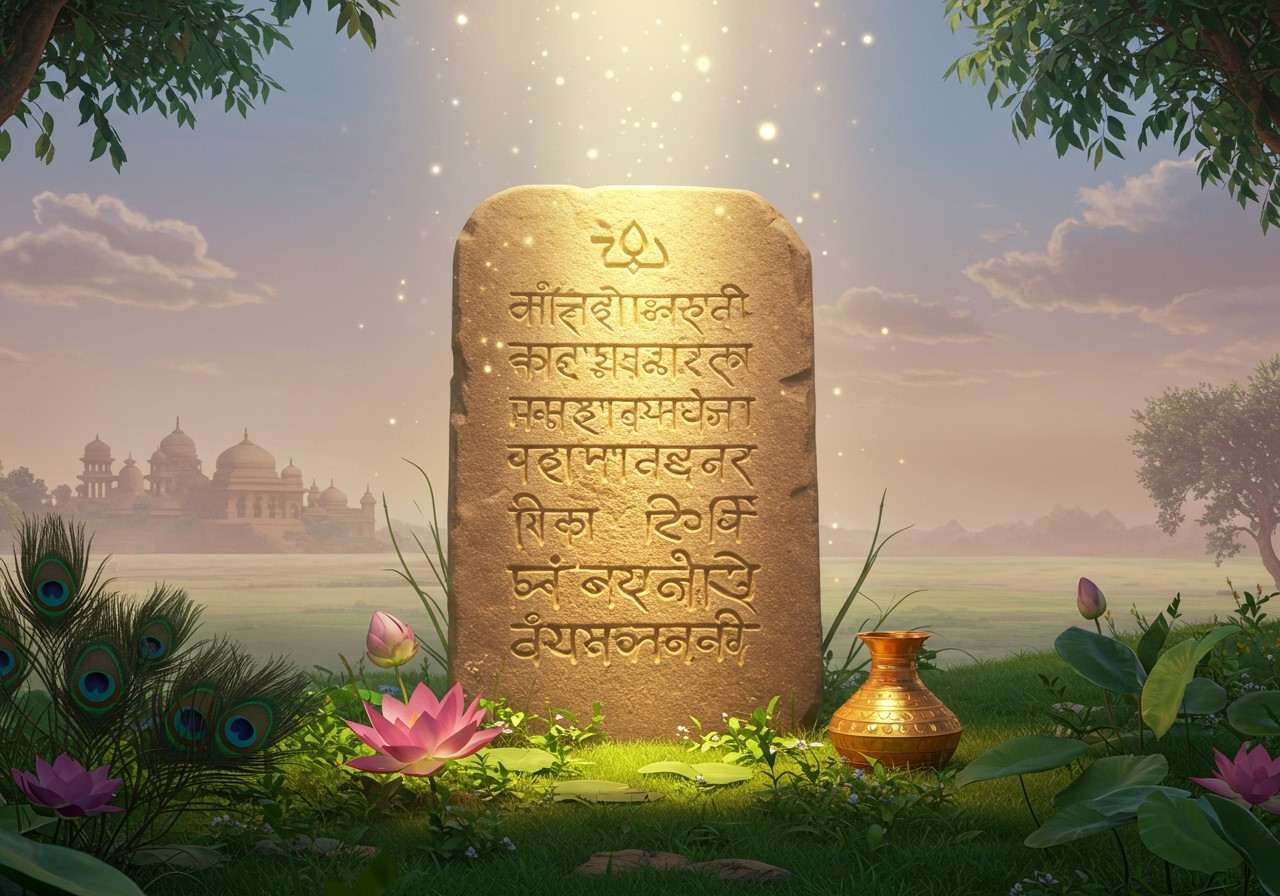
There’s a special kind of pride we feel when we speak our mother tongue, isn’t there? It’s a language that holds the warmth of our grandmother’s stories and the echoes of our ancestors. For the people of Karnataka, this deep connection to their language, Kannada, has a beautiful starting point etched in stone. This ancient stone tells the story of the Halmidi Inscription, the very first full-length love letter to the Kannada language.

A Discovery That Rewrote History
Let’s travel back in time to 1936. In the serene village of Halmidi in Hassan district, a piece of history was waiting to be found. It was Dr. M. H. Krishna, a dedicated archaeologist, who unearthed this treasure. What he found was not just any old stone, but the oldest known complete inscription in the Kannada language, generally dated between 450 and 500 CE. This discovery was a monumental moment, confirming that Kannada was a language of administration and literature much earlier than previously thought.
What Does the Stone Say? A Voice from the 5th Century
So, what secrets does this ancient stone hold? The Halmidi Inscription is a beautiful record of life and honour from a bygone era. It tells a tale of bravery, documenting a gift of the villages of Halmidi and Mulivalli to a valiant warrior named Vija Arasa. This was his reward for showing immense courage in a battle between the Kadambas and the Kekaya Pallavas. The inscription, which begins with an invocation to Lord Vishnu in Sanskrit, also mentions a grant to Brahmans. It’s a perfect little window into the social and political world of 5th-century Karnataka.
The Birth of a Script: From Ancient Brahmi to Modern Kannada
The language carved on the stone is what experts call ‘puruvada-hala Kannada’ or pre-old Kannada. Think of it as the great-grandparent of the Kannada we speak today! The script itself is a beautiful evolution from the ancient Brahmi script, which adapted and grew into what we now recognise as the Kannada script. This inscription is living proof of the sophisticated and structured nature of the Kannada language even centuries ago.
Just as this inscription helps us connect with our history, our traditions and rituals keep us rooted in our culture. Having authentic items for our poojas and ceremonies is a way we honour this connection. At Poojn.in, we understand this sentiment deeply. That’s why we bring you a curated collection of Pooja Samagri, ensuring every ritual you perform is pure and meaningful.
Why This Inscription is a Gem of Our Heritage
The Halmidi inscription is truly significant because it marks Kannada’s transition from a spoken dialect to a language of the court and administration. While it is celebrated as the oldest full-length record, it’s fascinating to know that scholars have found even older fragments with Kannada words. For example, the Lion balustrade inscription at Talagunda is believed to be from around 370 AD. These discoveries paint a rich picture of our linguistic journey, much like the timeless stories found in epics like the Ramayana, which continues to shape our culture.
Preserving Our Past, Inspiring Our Future
Many people often wonder about the current location of this precious artefact. To protect it for future generations, the original Halmidi inscription is safely housed at the Office of the Director of Archaeology and Museums in Mysore. However, to ensure that everyone can witness this piece of pride, a beautiful fiberglass replica has been installed in its home village of Halmidi. This allows the legacy to be accessible, inspiring a sense of identity and pride among Kannadigas and all Indians.
This dedication to preservation reminds us of the importance of passing down our traditions. Whether it’s the stories we tell or the rituals we perform, every small act is a link to our past. For all your spiritual needs, from holy books to sacred clothing, Poojn.in is here to support your spiritual journey with authentic and high-quality products, delivered right to your doorstep.
Answering Your Curiosities about the Halmidi Inscription
The Impact on Kannada Literature
One might ask how a single stone could influence an entire body of literature. The Halmidi Inscription acted as a cornerstone. It established a written tradition for Kannada, paving the way for great literary works, poems, and dramas in the centuries that followed. It was the first step that allowed a rich oral tradition to flourish in written form, creating a legacy that continues to grow.
Understanding its Content and Language
Deciphering such an ancient text is a challenging task for historians and linguists. They carefully analyse the script, vocabulary, and structure to understand its meaning. By comparing it with other inscriptions from that period, they can piece together the historical context and appreciate the nuances of the pre-old Kannada language. It’s a meticulous process that unlocks the stories of our ancestors.
A Symbol of Karnataka’s Cultural Heritage
The Halmidi Inscription is more than just an archaeological find; it is a vital part of Karnataka’s living cultural heritage. It stands as a powerful symbol of the region’s deep historical and linguistic roots. Its discovery fuels cultural festivals, educational initiatives, and a renewed interest in the state’s magnificent history, similar to the awe inspired by the stunning architecture of the Badami Cave Temples.


